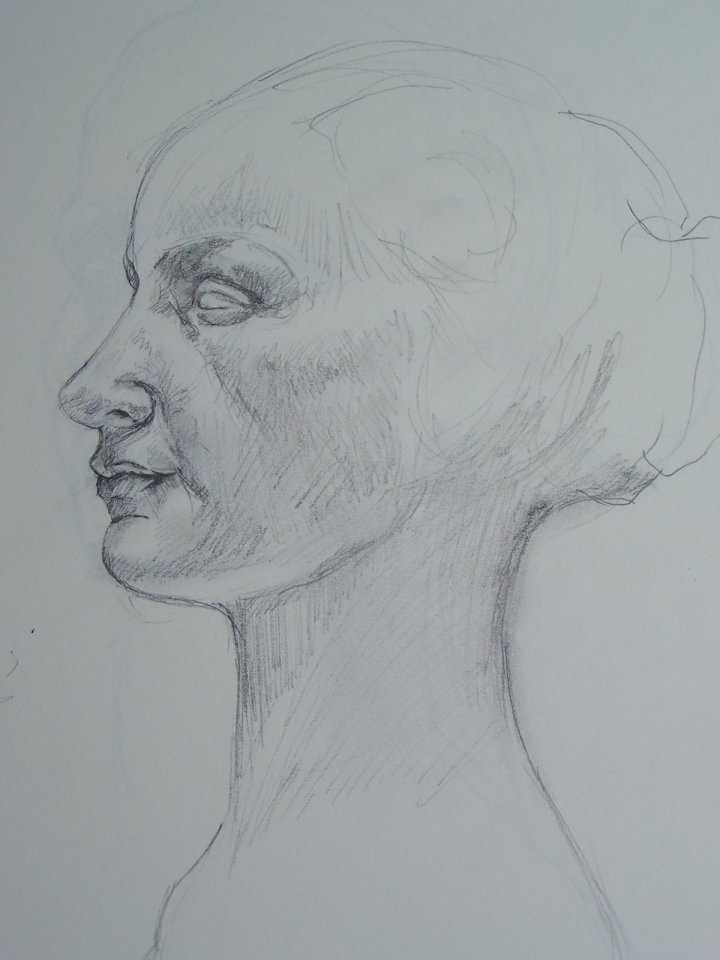Copying masterworks is one way both to learn and to delight in looking. Just as I’ve made innumerable drawings of my sea shell, or my fish Pixel, or my favorite spot along my favorite walk — or let’s not forget the many drawings of Doll — so I discover I made more drawings of this lady than I realized. She’s a Renaissance sculpture at the National Gallery of Art, and a charming gal even if she’s made of stone.
Drawing from “life”
The same Renaissance portrait sculpture that I drew and posted previously is pictured above from a different angle. The wonderful thing about drawing from a sculpture is that you can study a figure from various angles, and yet always the pose is the same since, of course, she never moves.
I was aware of an artist’s manual, written by none other than Peter Paul Rubens, that exists now only in a fragment. He advised artists to make drawings after sculpture (as was his own practice) and to draw in such a way as to breathe life into the figure. It should not look like a sculpture, but like a person. I was aware of that advice and felt at the time of the drawing that my version was too much sculpture still and not enough of a person. However, looking at the drawing now from a distance of some years, I think the woman in the drawing looks very alive — even despite her iris-less eyes.
That’s why you draw first and editorialize later. You need to gain distance from your drawings if you are really to understand them. At the time of their making, your mind is full of your intentions — many of which do not make it onto the page — many of which are even conflicting and unformed. And your mind is full of the model, which will of course be different from the drawing in innumerable ways (and this is not necessarily a bad thing).
When you are drawing, you should simply concentrate upon drawing, being focused on the subject and your visual thoughts about it. And afterwards you can learn to understand the drawing you made, but you have to realize that it takes time. What you notice about your drawings changes with time. (Sometimes your drawing gets better! Sometimes it gets worse. Que sera sera.)
I can’t find the particular sculpture that I drew on the National Gallery’s website. Perhaps I can locate it at a later date. However, it is similar to this figure attributed to a follower of Andrea del Verrocchio.
I like the way this woman’s head is held high, the way her neck is as supple and erect as a young plant. This would be a difficult pose for a model to hold without tiring, which is exactly why drawing from the sculpture has so many benefits. This model not only doesn’t move: she never gets tired.
[Top of the post: Drawing after a Renaissance Sculpture, by Aletha Kuschan]


